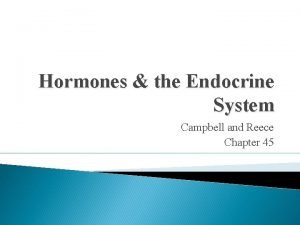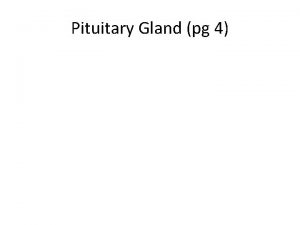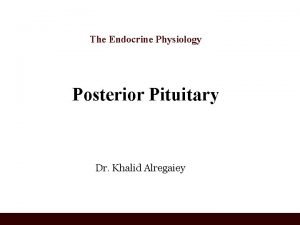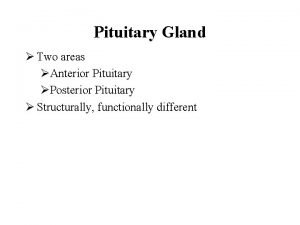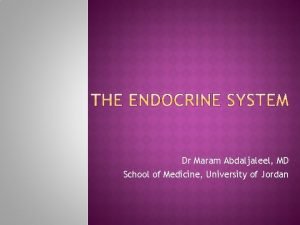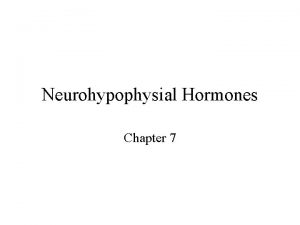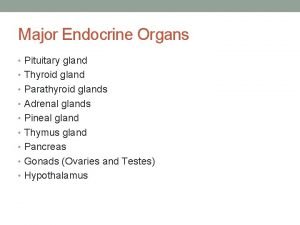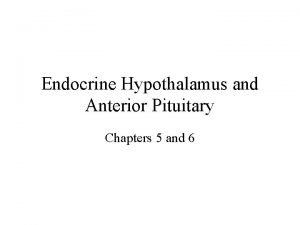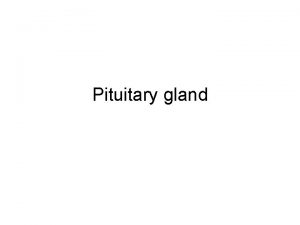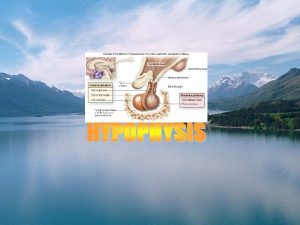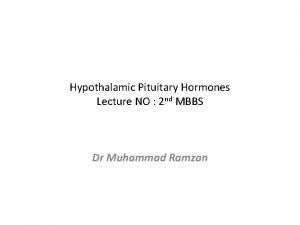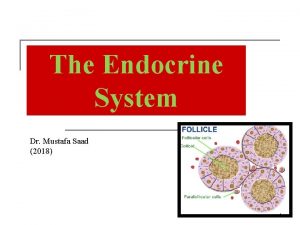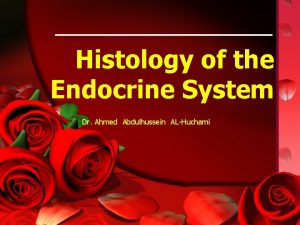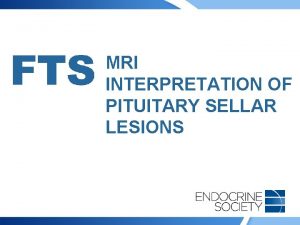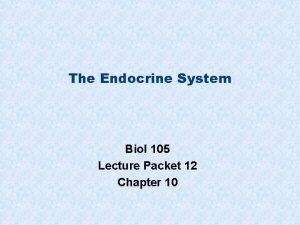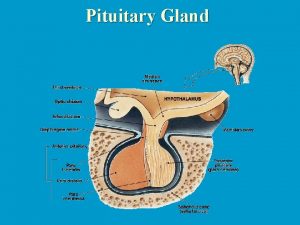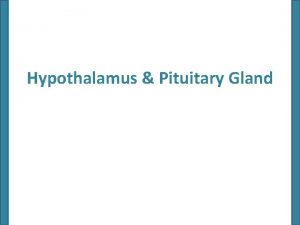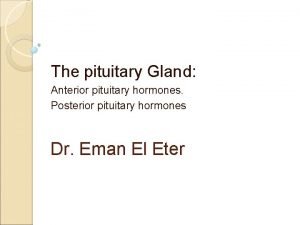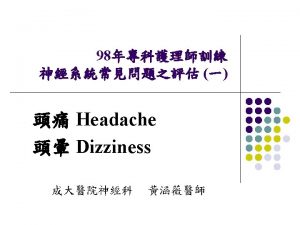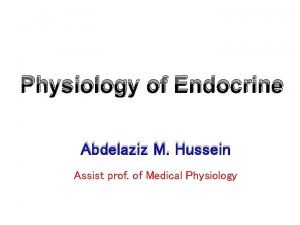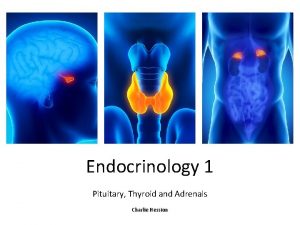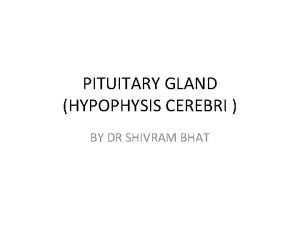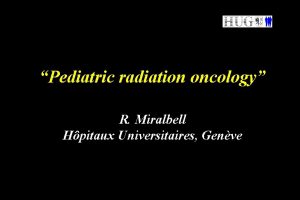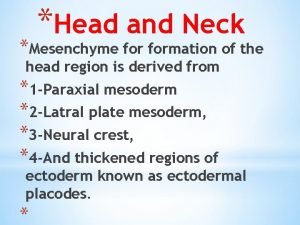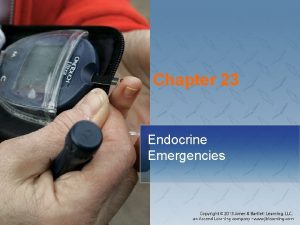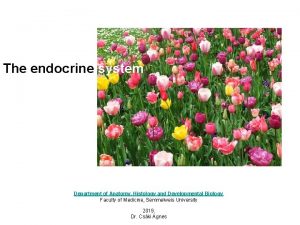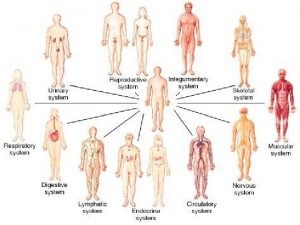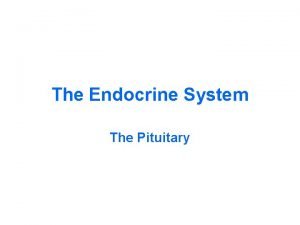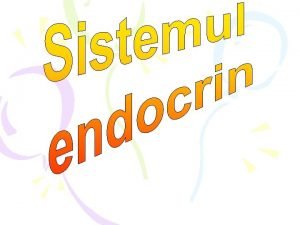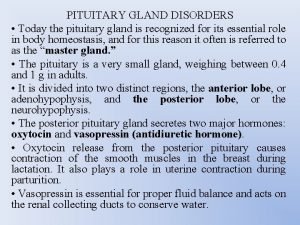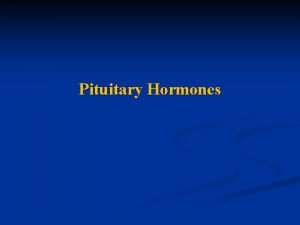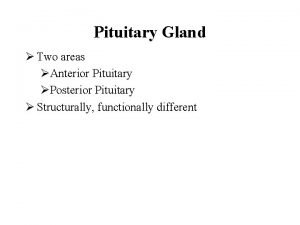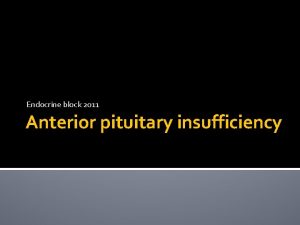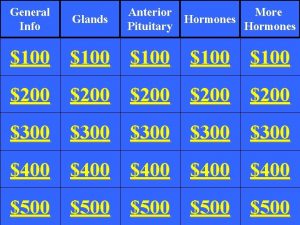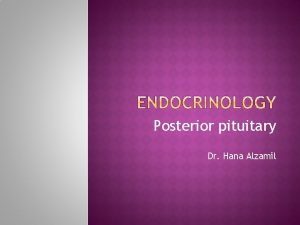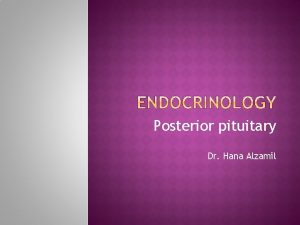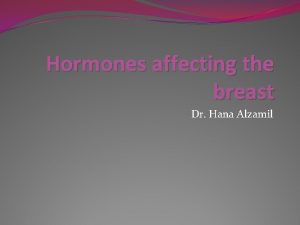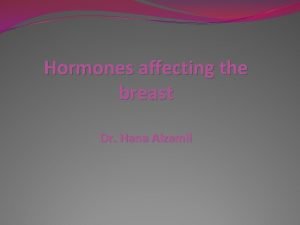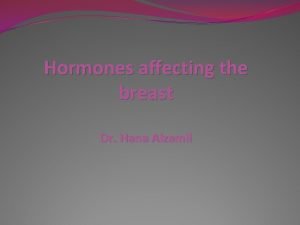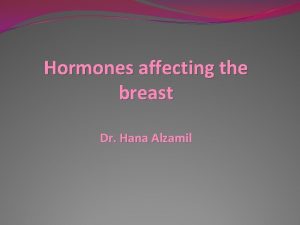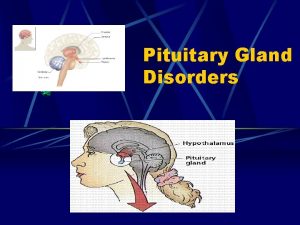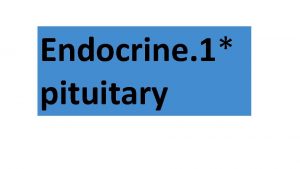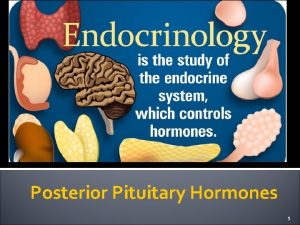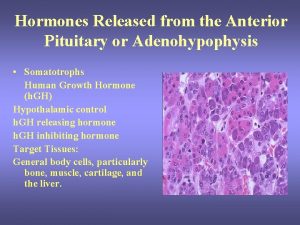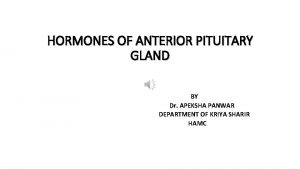Dr Hana Alzamil Anterior pituitary hormones GH Physiological




































- Slides: 36

Dr. Hana Alzamil

Anterior pituitary hormones GH Physiological functions Regulation of GH secretion Feedback mechanism Factors controlling secretion Prolactin Physiological functions Regulation of prolactin secretion


(ADENOHYPOPHYSIS) Anterior pituitary gland (adenohypophysis) is connected to hypothalamus by portal system: “hypothalamichypophysial portal vessels”.



(Somatotropin)



A) § § Long term effect Promotion of growth: cellular sizes & mitosis tissue growth & organ size Indirect effect Depends on somatomedin ‘insulin– like growth factor [IGF-I& II] secreted by the liver, which is responsible for effect of GH on bone & cartilage growth and increase the synthesis of protein in skeletal muscles.

1. Linear growth of long bones: ● Long bones grow in length at epiphyseal cartilages, causing deposition of New Cartilage ( collagen synthesis) followed by its conversion into bone. ● When bony fusion occurs between shaft & epiphysis at each end, no further lengthening of long bone occur. 2. Deposition of New Bone ( cell proliferation) on surfaces of older bone & in some bone cavities, thickness of bone. ● Occurs in membranous bones, e. g. jaw, & skull bones.

Epiphysis Diaphysis Bone growth Compact bone Dividing chondrocytes Epiphyseal plate Old chondrocytes Chondrocyte Cartilage Osteoblast Diaphysis Osteoblasts Newly calcified bone Direction of growth Chondrocytes


Short term Metabolic effects: q Protein metabolism (Anabolic) rate of protein synthesis in all cells through: B. amino acids transport into cells DNA transcription= RNA synthesis RNA translation= protein synthesis ↓protein catabolism “protein sparer”

q § § Fat metabolism: Catabolic mobilization of FFAs from adipose tissue stores Conversion of FFT to acetyl Co. A to provide energy

q § § CHO metabolism: Hyperglycemic glucose uptake by tissues (skeletal muscles and fat). rate of glucose utilization throughout the body glucose production by the liver ( gluconeogenesis) insulin resistance ( FFA) (diabetogenic )


Increases calcium absorption from GIT Strengthens and increases the mineralization of bone Retention of Na+ and K+ Increases muscle mass Stimulates the growth of all internal organs excluding the brain Contributes to the maintenance and function of pancreatic islets Stimulates the immune system

1. The hypothalamus: a. GHRH GH secretion. b. GHIH (somatostatin) GH secretion 2. Hypoglycemia (fasting) GH secretion. (N. B. glucose intake GH secretion). 3. FFAs GH secretion

4. Intake of protein or amino acids GH secretion (after meals). 5. Starvation & protein deficiency GH 6. During sleep more in children. 7. Stress conditions, e. g. trauma or emotions GH secretion. 8. Ghrelin (stomach) GH secretion. 9. Muscular exercise GH secretion.





ABNORMALITIES OF GH SECRETION: Signs & symptoms ‘in childhood’: Gigantism, � � as all body tissues grow rapidly, including bones. Height as it occurs before epiphyseal fusion of long bones with their shafts. Hyperglycemia (diabetes). � Signs & symptoms ‘in adults’: Acromegally, person can’t grow taller, BUT soft tissue continue to grow in thickness (skin, tongue, liver, kidney, …) - Enlargement of bones of hands & feet. - Enlargement of membranous bones including cranium, nose, forehead bones, supraorbital ridges. - Protrusion of lower jaw. - Hunched back (kyphosis) (enlargement of vertebrae).






The major function of prolactin is milk production • Release is inhibited by PIH (dopamine) • Suckling response inhibits PIH release

Oxytocin Prolactin

Effect on the breast Increases m. RNA Increases production of casein and lactalbumin Inhibits the effects of gonadotropins Other effects Stimulates the secretion of dopamine in median eminence (inhibits own secretion)

Inhibition of PL secretion PIH (Dopamine) Stimulation of PL secretion Exercise Surgical & psychological stress Stimulation of the nipple Sleep Pregnancy TRH


Thank you
 Anterior pituitary hormones
Anterior pituitary hormones Structure of hypothalamus and pituitary gland
Structure of hypothalamus and pituitary gland Pituitary gland hormones
Pituitary gland hormones Parathyroid gland chief cell
Parathyroid gland chief cell Posterior pituitary
Posterior pituitary Anterior pituitary
Anterior pituitary Anterior pituitary
Anterior pituitary Difference between anterior and posterior pituitary
Difference between anterior and posterior pituitary Anterior pituitary
Anterior pituitary Difference between anterior and posterior pituitary
Difference between anterior and posterior pituitary Embryonic origin of pituitary gland
Embryonic origin of pituitary gland Dwrfism
Dwrfism Pituitary gland division
Pituitary gland division Hypophyseal fossa and pituitary gland
Hypophyseal fossa and pituitary gland Dictalie
Dictalie Pituitary adenoma
Pituitary adenoma Pituitary dwarfism
Pituitary dwarfism Oxytocin
Oxytocin Pineal gland pituitary gland
Pineal gland pituitary gland Hypophyseal fossa and pituitary gland
Hypophyseal fossa and pituitary gland Hypothalamus hormones
Hypothalamus hormones Pituitary dwarfism
Pituitary dwarfism Pituitary hypoplexy
Pituitary hypoplexy Hypophyseal portal system
Hypophyseal portal system Diaphragma sellae
Diaphragma sellae Pituitary adenoma
Pituitary adenoma Pituitary and optic chiasm
Pituitary and optic chiasm Brainstem glioma
Brainstem glioma Tuberculum impar
Tuberculum impar Pituitary
Pituitary Pituitary gland inferior view
Pituitary gland inferior view Organ system
Organ system Pituitary gland
Pituitary gland Zona
Zona Hormoni hidrosolubili
Hormoni hidrosolubili Pituitary gland and pineal gland spiritual
Pituitary gland and pineal gland spiritual Pituitary gland disorders
Pituitary gland disorders
